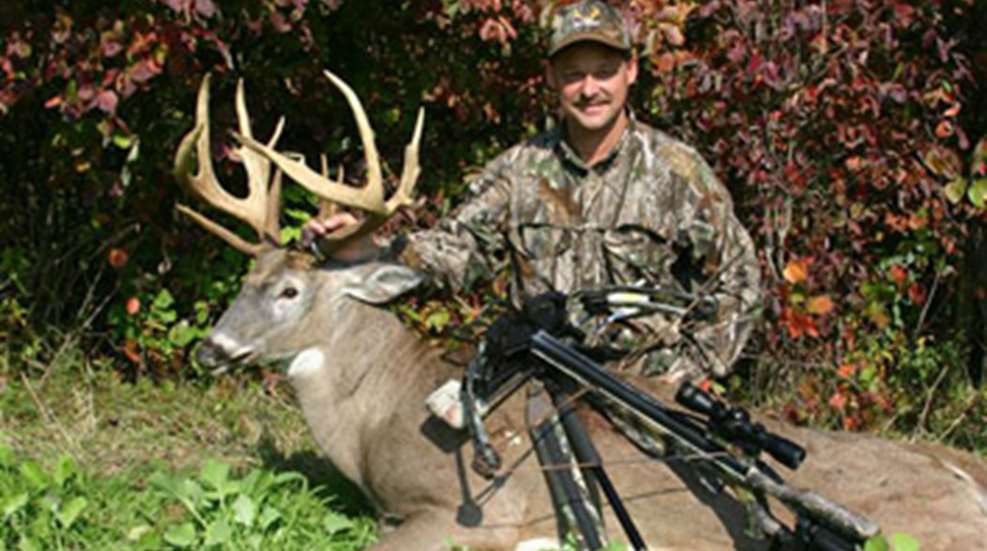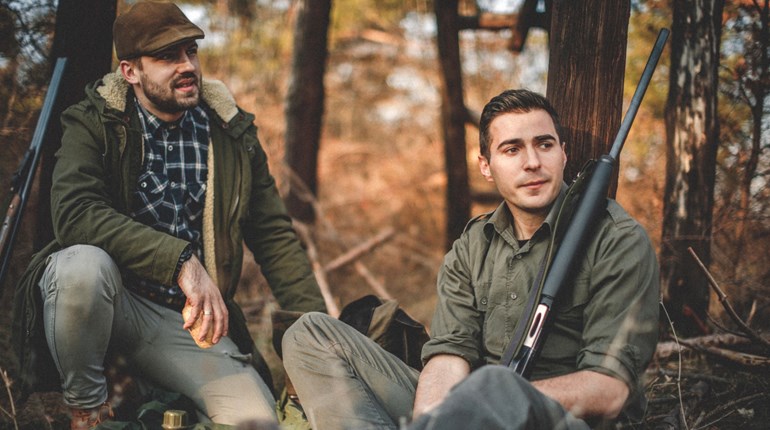
Before you pull the trigger or release an arrow, do you know how to field judge a whitetail deer’s antlers? Those who hunt simply to fill the freezer, this is not really an issue. But for those who are hoping to shoot a buck with antlers that meet or exceed a certain numeric score, more often than not, overestimate the size of the antlers, leading to that common malady known as “ground shrinkage.”
Here are some tips on how to quickly size up a buck’s antlers.
• Your first impression will be of the rack’s height, width, mass, and number of points. Your next impression should be of the length of the main beam, length of the points, inside spread between the main beams, and the rack’s mass at four places.
• As a point of reference—and forgetting about those monster bucks of Canada and tiny deer of the south—the average buck has a distance of 16 inches between the tips of his ears, when the ears are in the alter position. Each ear is about 6 inches in length. The circumference of the eye is about 4 inches. From the center of the eye to the tip of the nose is about 8 inches. Of course, if you have hunted an area a lot and seen a lot of dead bucks, you can adjust these measurements accordingly.
• Judging inside spread is easy—how far outside the tips of the ears do the antlers protrude?
• Main beam length is judged using the ear length and eye-to-nose distance for reference, keeping in mind that the beams may curve in and nearly touch, which makes them seem shorter than they really are.
• Scorable points are any points that exceed 1 inch in length and is longer than it is wide at one inch or more of length. In a quick judgment, forget about these and look for all the longer points, including the brow tines. Use the same ear length reference point to give you a quick idea of how long the tines might be.
• Mass: Here is where the deer’s 4-inch eye circumference is helpful. Is the circumference of the antler at the base, as well as between the tines, larger or smaller than the eye?
• What components of a typical whitetail rack account for the highest percentage of the overall score? Here’s how it breaks down:
- Main Beam: 30 percent
- Inside Spread: 12 percent
- First Point Length (G-1): 6 percent
- Second Point Length (G-2): 12 percent
- Third Point Length (G-3): 12 percent
- Fourth Point Length (G-4): 7 percent
- Circumference of Bases (H-1): 6 percent
- Circumference between points 1 & 2 (H-2): 5 percent
- Circumference between points 2 & 3 (H-3): 5 percent
- Circumference between points 3 & 4 (H-4): 4 percent
In a perfect world, you would be able to leisurely look the antlers over before deciding to shoot, or not. Whenever possible you want to be able to look at the rack from the front and both sides, which is extremely helpful in estimating the length of the main beams. And never forget that a rear view almost always gives an inflated impression of how big the antlers really are. And, of course, as the saying goes, if you have to talk yourself into the buck being big enough, it probably isn’t. Conversely, if the antlers take your breath away at first glance, who cares what it scores? Shoot!
Need some practice? Then use some mounted heads. Use the reference points mentioned above to quickly estimate the score, then check them against the actual score.





































